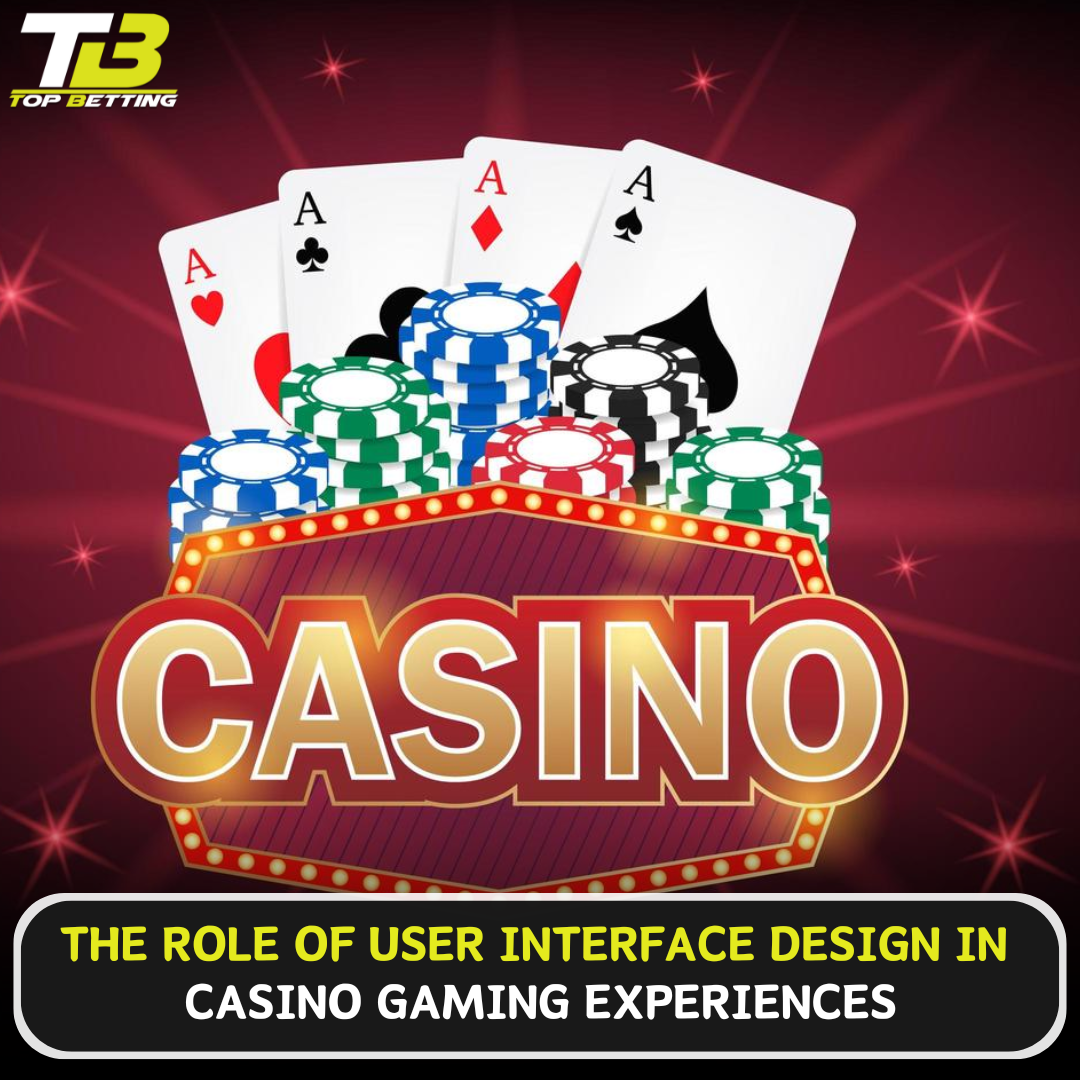
The Role of User Interface Design in Casino
Importance of user interface design in casino gaming experiences
Step into the world of casino gaming, and you’ll be greeted by a dazzling array of lights, sounds, and animations. From the captivating spin of the roulette wheel to the mesmerizing dance of the slot machine reels, every element of the casino gaming experience is carefully crafted to engage and enthrall players. At the heart of this immersive experience lies the user interface design – a critical component that shapes the way players interact with and navigate through the casino’s digital landscape.
User interface design is not just about creating visually appealing graphics or intuitive navigation. It is a multifaceted discipline that encompasses the entire user experience, from the moment a player logs in to the moment they cash out their winnings. A well-designed interface can make the difference between a player feeling lost and overwhelmed, or completely immersed and engaged in the game. It is the bridge that connects the player to the game, and its importance in the casino gaming industry cannot be overstated.
The casino gaming industry is highly competitive, with players having a vast array of options at their fingertips. In this crowded market, user interface design plays a crucial role in helping casino operators differentiate their offerings and captivate their target audience. A well-designed interface can create a sense of familiarity and comfort, making players feel at home and eager to explore the various games and features on offer. Conversely, a poorly designed interface can lead to frustration, confusion, and ultimately, a loss of player engagement and loyalty.
Elements of effective user interface design in casino games
At the heart of an effective user interface design in casino games lies a delicate balance between aesthetics, functionality, and user experience. The visual elements of the interface, such as the color scheme, typography, and iconography, must be carefully curated to create a cohesive and visually appealing experience. These design choices not only contribute to the overall aesthetic appeal of the game but also play a crucial role in guiding the player’s attention and facilitating their navigation through the various features and options.
Equally important is the functionality of the user interface. The layout and organization of the game’s menus, controls, and information displays must be intuitive and easy to understand. Players should be able to quickly find and access the features they need, whether it’s placing a bet, checking their account balance, or exploring new game options. Effective user interface design in casino games often involves the use of clear and concise labeling, intuitive navigation, and well-placed interactive elements that enhance the player’s overall experience.
Beyond the visual and functional aspects, user interface design in casino games must also consider the overall user experience. This encompasses factors such as responsiveness, accessibility, and personalization. A responsive interface that adapts seamlessly to different devices and screen sizes can ensure a consistent and enjoyable experience across multiple platforms.
Accessibility features, such as adjustable text sizes and alternative control schemes, can make the game more inclusive and welcoming to a diverse range of players. Furthermore, the ability to personalize the interface, such as customizing the layout or selecting preferred themes, can foster a sense of ownership and investment in the gaming experience.
Impact of user interface design on player engagement and retention
The impact of user interface design on player engagement and retention in the casino gaming industry cannot be overstated. A well-crafted interface can create a sense of immersion and connection, keeping players coming back for more excitement and thrills. Conversely, a poorly designed interface can lead to frustration, confusion, and ultimately, a loss of player engagement and loyalty.
One of the primary ways in which user interface design influences player engagement is through the creation of a seamless and intuitive gaming experience. When players can easily navigate the various features and options, they are more likely to spend more time exploring the game and engaging with its content. This, in turn, can lead to increased player satisfaction, as they feel empowered and in control of their gaming experience.
Moreover, user interface design can also impact player retention by fostering a sense of familiarity and comfort. When players feel at home within the casino’s digital landscape, they are more likely to return and continue their gaming journey. This is particularly important in the casino gaming industry, where player loyalty and repeat business are crucial to the success of the operation. By creating a consistent and recognizable user interface design across multiple games and platforms,
Examples of successful user interface designs in popular casino games
In the ever-evolving world of casino gaming, there are numerous examples of successful user interface designs that have captivated players and set the industry standard. One such example is the user interface design of the popular online slot game, Mega Moolah. Developed by Microgaming, this game features a clean and intuitive layout that seamlessly integrates the game’s theme and features.
The Mega Moolah interface is characterized by its vibrant color scheme, crisp graphics, and well-organized menu system. The game’s controls are prominently displayed, allowing players to easily adjust their bet sizes, activate the autoplay function, and access the paytable. The interface also includes a clear and concise display of the player’s current balance, as well as the progressive jackpot amount, which serves as a constant source of excitement and anticipation.

Another example of a successful user interface design in the casino gaming industry is the interface of the live dealer games offered by Evolution Gaming. These games, which include classics such as roulette, blackjack, and baccarat, feature a sleek and modern interface that enhances the immersive experience of playing with a live dealer. The interface seamlessly integrates the live video feed of the dealer with the game’s controls and information displays, creating a cohesive and visually stunning experience.
One of the key strengths of the Evolution Gaming interface is its intuitive navigation and user-friendly controls. Players can easily access the game’s various features, such as adjusting their bet sizes, accessing the game history, and communicating with the dealer through the chat function. The interface also includes a clear and concise display of the game’s rules and payouts, ensuring that players have all the information they need to make informed decisions.
User interface design trends in the casino gaming industry
As the casino gaming industry continues to evolve and adapt to the changing needs and preferences of players, user interface design trends have also been evolving to meet these demands. One of the most notable trends in recent years has been the increasing emphasis on mobile-friendly and responsive design.
With the growing popularity of mobile gaming, casino operators have recognized the importance of creating user interfaces that are optimized for smaller screens and touch-based interactions. This has led to the development of sleek and intuitive mobile interfaces that provide a seamless and enjoyable gaming experience across a variety of devices, from smartphones to tablets.
Another emerging trend in user interface design for casino games is the integration of personalization and customization features. Players today expect a more personalized gaming experience, and casino operators are responding by incorporating tools that allow players to customize the look and feel of the interface, as well as the game’s features and settings. This level of personalization not only enhances the player’s sense of ownership and investment in the gaming experience but also helps to create a more engaging and immersive environment.
Best practices for designing user interfaces in casino games
Designing effective user interfaces for casino games requires a deep understanding of the players’ needs, preferences, and behaviors. By following best practices in user interface design, casino operators can create interfaces that not only look visually appealing but also enhance the overall gaming experience.
One of the fundamental best practices in user interface design for casino games is to prioritize simplicity and intuitive navigation. Players should be able to quickly and easily find the features and options they need, without feeling overwhelmed by a cluttered or confusing interface. This can be achieved through the use of clear and concise labeling, well-organized menus, and intuitive control schemes.
Conclusion: The future of user interface design in casino gaming
As the casino gaming industry continues to evolve and adapt to the changing needs and preferences of players, the role of user interface design in shaping the overall gaming experience will only become more crucial. From the seamless integration of advanced technologies to the personalization of the player’s journey, the future of user interface design in casino gaming is poised to be both captivating and transformative.

One of the most exciting developments on the horizon is the integration of augmented reality (AR) and virtual reality (VR) technologies into the casino gaming experience. These innovative technologies have the potential to create even more immersive and immersive gaming environments, where the boundaries between the digital and physical worlds blur, and players are transported to entirely new realms of excitement and adventure.











